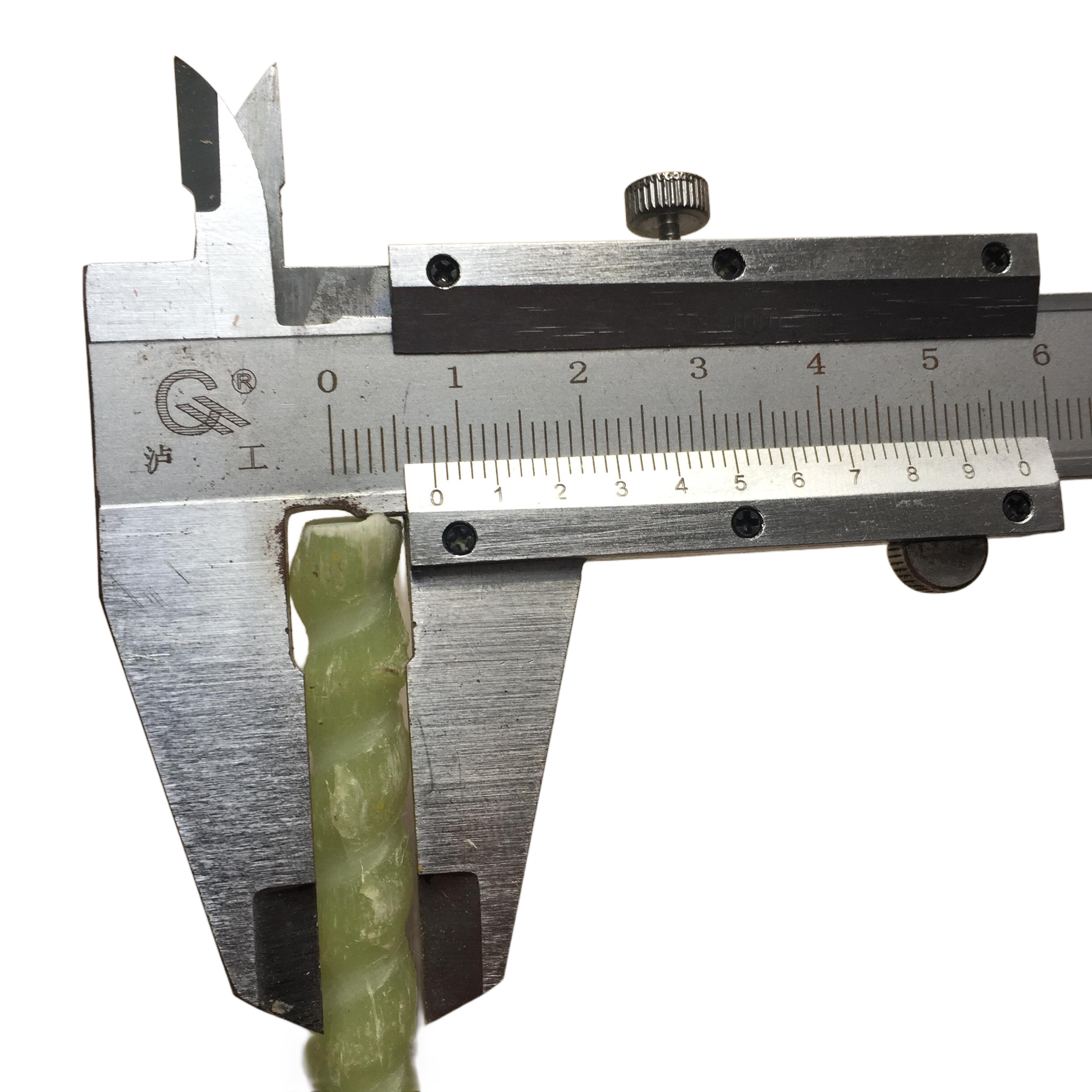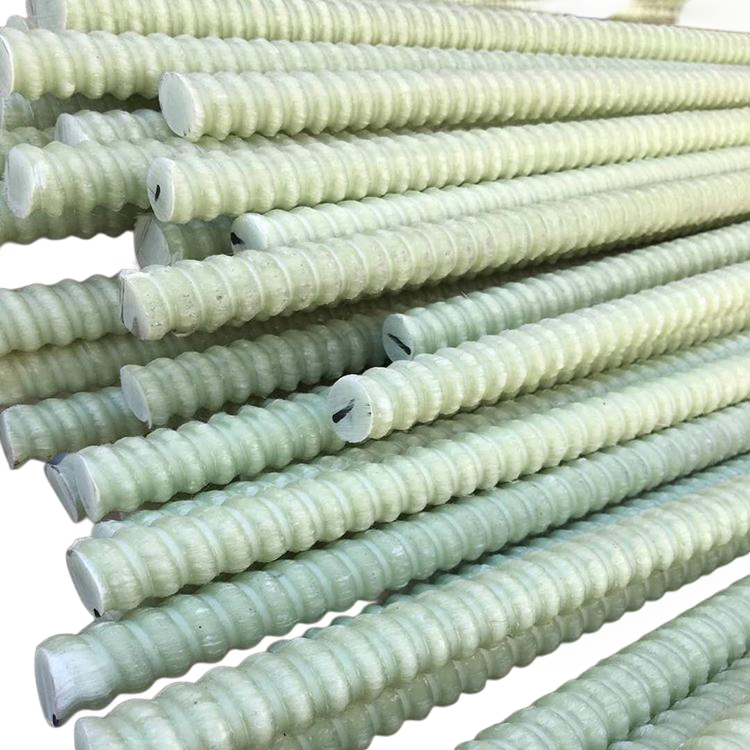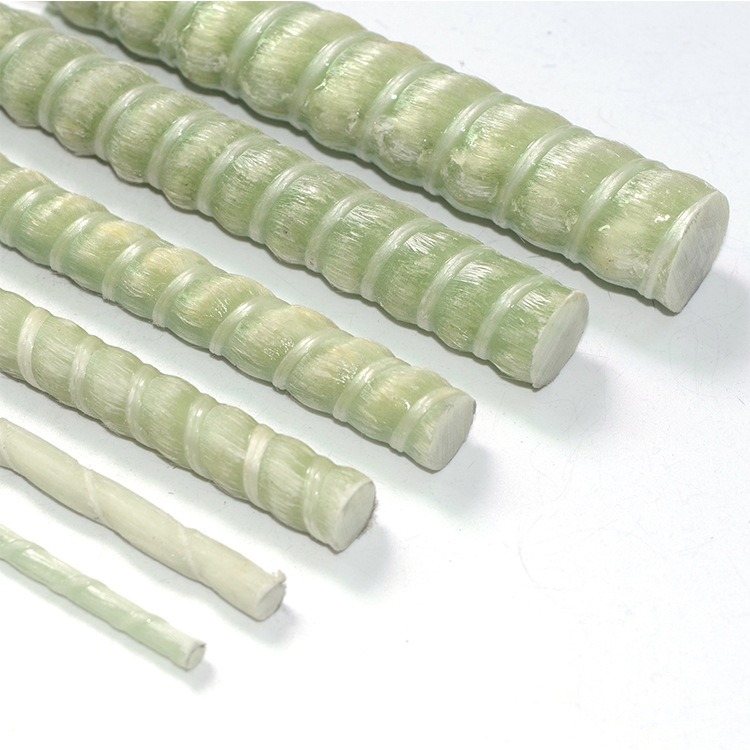Introduction
In the realm of composite materials, abbreviations like FRP and GRP often surface, creating a need for clarity among professionals and enthusiasts alike. Both materials have revolutionized various industries due to their remarkable properties, but understanding the nuances that set them apart is crucial. This article delves into the core differences between Fiber Reinforced Plastics (FRP) and Glass Reinforced Plastics (GRP), shedding light on their compositions, applications, and advantages. By comprehending these differences, industry professionals can make informed decisions when selecting materials for specific applications, ensuring optimal performance and cost-effectiveness. Notably, Fiberglass Reinforcement Profile plays a significant role in the discussion of these composite materials.
Understanding FRP
Definition and Composition of FRP
Fiber Reinforced Plastics (FRP) are composite materials consisting of a polymer matrix reinforced with fibers. The fibers can be glass, carbon, aramid, or basalt, among others. The polymer matrix is typically made from thermosetting resins like epoxy, polyester, or vinyl ester. The combination results in a material that exhibits superior mechanical properties compared to the original polymer, including enhanced strength, stiffness, and resistance to environmental factors.
Applications of FRP
FRP materials are widely used across various sectors due to their customizable properties. In the construction industry, FRP is used for reinforcing bars, structural components, and retrofitting existing structures. The aerospace and automotive industries utilize FRP for lightweight components that improve fuel efficiency without compromising strength. Additionally, FRP is prevalent in the manufacturing of sports equipment, marine vessels, and consumer goods.
Exploring GRP
Definition and Composition of GRP
Glass Reinforced Plastics (GRP), often known as fiberglass, is a type of FRP where the reinforcement fiber is specifically glass. The glass fibers provide the composite with enhanced tensile strength and durability. The matrix in GRP is usually a thermosetting plastic like polyester or epoxy resin, which binds the fibers together and transfers loads between them.
Applications of GRP
GRP is extensively utilized in industries where corrosion resistance and structural strength are paramount. In construction, GRP is used for roofing materials, piping, and reinforcement profiles. The marine industry employs GRP in boat hulls and offshore platforms due to its resistance to saltwater corrosion. Furthermore, GRP is found in the production of storage tanks, automotive body panels, and wind turbine blades.
Key Differences Between FRP and GRP
Material Composition
The primary difference between FRP and GRP lies in the type of reinforcement fibers used. While FRP is a broad category encompassing all fiber-reinforced plastics, GRP specifies the use of glass fibers. This distinction is crucial because the type of fiber significantly influences the mechanical properties and suitability for different applications. For instance, carbon fibers in FRP composites offer higher stiffness and strength compared to glass fibers but at a higher cost.
Mechanical Properties
GRP composites generally offer excellent tensile strength and durability, making them suitable for a wide range of applications. Typically, GRP exhibits tensile strengths ranging from 1,200 to 3,500 MPa and a modulus of elasticity between 70 and 85 GPa. However, FRP composites reinforced with fibers like carbon can provide superior mechanical properties, with tensile strengths exceeding 4,000 MPa and modulus of elasticity values upwards of 230 GPa. These significant differences highlight why certain applications may favor one material over the other based on performance requirements.
Cost Considerations
Cost is a significant factor when choosing between different types of FRP. GRP is generally more cost-effective due to the lower price of glass fibers compared to carbon or aramid fibers. This affordability makes GRP a popular choice for large-scale applications where budget constraints are a concern, without severely compromising performance requirements. In contrast, the use of advanced fibers in other FRP composites can significantly increase material costs.
Comparative Analysis in Construction Applications
Durability and Lifespan
In construction, both FRP and GRP offer enhanced durability compared to traditional materials like steel and wood. GRP, with its excellent corrosion resistance, is particularly advantageous in environments exposed to moisture and chemicals. Studies have shown that GRP structures can have a service life exceeding 50 years with minimal maintenance. On the other hand, FRP composites reinforced with carbon fibers provide exceptional fatigue resistance and longevity, ideal for infrastructure projects requiring extended lifespans and higher performance metrics.
Weight and Structural Efficiency
The lightweight nature of both FRP and GRP contributes to easier handling and installation in construction projects. FRP materials with carbon or aramid fibers offer superior strength-to-weight ratios compared to GRP. This means that structures can achieve the same or greater strength with less material, potentially reducing overall project weight by up to 20% and lowering transportation and installation costs.
Thermal and Electrical Properties
GRP exhibits excellent insulating properties against heat and electricity, making it suitable for applications where thermal regulation and electrical insulation are required. Alternative FRP composites can be tailored to exhibit different thermal and electrical properties based on the choice of fibers and resins. For example, carbon fiber composites are electrically conductive, which can be beneficial or detrimental depending on the application. This versatility allows engineers to select materials that best align with the project's thermal and electrical requirements.
Advantages and Disadvantages
Advantages of GRP
GRP's primary advantages include its cost-effectiveness, corrosion resistance, and versatility. Its affordability allows for widespread use in various industries without significantly impacting budgets. Additionally, GRP's resistance to environmental degradation extends the lifespan of components exposed to harsh conditions, reducing maintenance costs over time. The material is also non-conductive and has good thermal insulation properties, adding to its appeal in electrical and thermal applications.
Disadvantages of GRP
Despite its benefits, GRP has limitations in terms of mechanical strength compared to other FRP composites. Glass fibers have lower tensile strength and stiffness than carbon or aramid fibers. Consequently, GRP may not be suitable for applications requiring the highest levels of structural performance. Additionally, GRP can be more brittle than other composites, potentially leading to failure under high-impact loads. Its lower fatigue resistance compared to carbon fiber composites may also limit its use in dynamic or cyclic loading conditions.
Advantages of Other FRP Composites
FRP composites reinforced with fibers like carbon or aramid offer high strength, low weight, and excellent fatigue resistance. These properties are critical in high-performance applications, such as in aerospace, racing, and advanced engineering projects. The ability to tailor the composite's properties through the selection of fibers and resins provides engineers with significant flexibility in design. For example, carbon fiber composites can reduce structural weight by up to 30% compared to aluminum, leading to improved efficiency and performance.
Disadvantages of Other FRP Composites
The primary drawback of non-GRP FRP composites is the higher cost associated with advanced fibers like carbon and aramid. These materials can significantly increase the overall cost of a project, sometimes by a factor of 10 compared to GRP. Additionally, some high-performance composites require more sophisticated manufacturing processes, which can add to production time and expense. The availability of raw materials and the need for specialized fabrication facilities can also be limiting factors.
Selecting the Right Material for the Application
Choosing between FRP and GRP depends on the specific requirements of the application. For projects where cost is a critical factor and the required mechanical properties are within the capabilities of GRP, it remains an excellent choice. In contrast, applications demanding superior mechanical performance, reduced weight, and enhanced fatigue resistance may necessitate the use of other FRP composites. For instance, in aerospace applications where weight savings translate directly into fuel efficiency, the higher cost of carbon fiber composites is justified.
Understanding the environment in which the material will be used is also crucial. GRP's corrosion resistance makes it ideal for chemical plants, marine environments, and structures exposed to the elements. Meanwhile, FRP composites with specialized fibers can offer fire resistance, electromagnetic transparency, or other tailored properties essential for niche applications. Consulting with material scientists and engineers during the design phase can ensure the optimal selection of materials.
Environmental Impact and Sustainability
Environmental considerations are increasingly influencing material selection in engineering projects. GRP and FRP composites present both challenges and opportunities in this regard. The production of these materials involves energy-intensive processes and the use of non-renewable resources. However, their durability and long service life can offset the environmental impacts by reducing the need for frequent replacements. Additionally, ongoing research into recyclable composites and the development of thermoplastic matrices aims to improve the sustainability of composite materials.
Some manufacturers are incorporating recycled fibers into their composites or utilizing bio-based resins to reduce reliance on fossil fuels. For example, integrating lignin, a byproduct of the paper industry, as a component in resins can enhance the sustainability profile of FRP materials. The balance between performance and environmental impact remains a key focus area in composite material research and development.
Case Studies and Applications
GRP in Marine Construction
The marine industry extensively uses GRP for constructing boat hulls, decks, and marine structures. The material's ability to withstand saltwater corrosion and UV degradation makes it ideal for such applications. Vessels built with GRP benefit from reduced maintenance costs and extended service life. For example, the U.S. Coast Guard’s adoption of GRP for patrol boats has resulted in lower long-term operational costs and increased vessel availability.
FRP in Aerospace Engineering
In aerospace engineering, FRP composites reinforced with carbon fibers are indispensable. Their high strength-to-weight ratios contribute to fuel efficiency and performance in aircraft. Components such as fuselage sections, wing structures, and interior fittings utilize these advanced composites to meet stringent industry standards. The Boeing 787 Dreamliner, for instance, is constructed using approximately 50% composite materials by weight, significantly enhancing its performance metrics.
Construction with Fiberglass Reinforcement Profiles
Construction projects often employ Fiberglass Reinforcement Profile for structural support. These profiles offer the advantages of GRP, such as corrosion resistance and ease of installation, making them suitable for infrastructure exposed to harsh environmental conditions. They provide an effective alternative to traditional materials in bridge construction, coastal defenses, and industrial facilities. An example is the use of GRP reinforcement in the rehabilitation of the Hammersmith Flyover in London, enhancing its durability and load-bearing capacity.
Future Trends in Composite Materials
The development of composite materials continues to advance, with research focused on improving performance and reducing costs. Innovations in fiber technology, such as the creation of hybrid fibers and nano-reinforcements, aim to enhance the properties of FRP composites. For instance, incorporating graphene nano-platelets into the resin matrix can significantly improve mechanical properties and electrical conductivity.
Moreover, the integration of smart technologies into composite materials, like embedding sensors within the matrix, is an emerging trend. These smart composites can monitor structural health in real-time, providing valuable data for maintenance and safety assessments in critical applications like bridges, airplanes, and wind turbines. The adoption of Industry 4.0 technologies in manufacturing processes is also expected to optimize production efficiency and quality control.
Conclusion
In summary, while all GRP is a type of FRP, the term FRP encompasses a broader range of materials reinforced with various types of fibers. The choice between FRP and GRP hinges on factors such as mechanical property requirements, environmental conditions, and budget constraints. GRP remains a cost-effective and versatile material suitable for numerous applications, especially where corrosion resistance is paramount. Conversely, FRP composites with alternative fibers offer enhanced properties for applications demanding higher performance.
Understanding the distinctions between these materials is essential for engineers, designers, and industry professionals aiming to optimize material selection for their projects. Moreover, considering life-cycle costs and environmental impact is increasingly important in sustainable engineering practices. As the field of composite materials evolves, staying informed about advancements will continue to be critical in leveraging the best properties of these innovative materials.
For those interested in exploring practical applications or sourcing materials, products like Fiberglass Reinforcement Profile offer tangible examples of how GRP can be effectively utilized in modern engineering solutions.




























